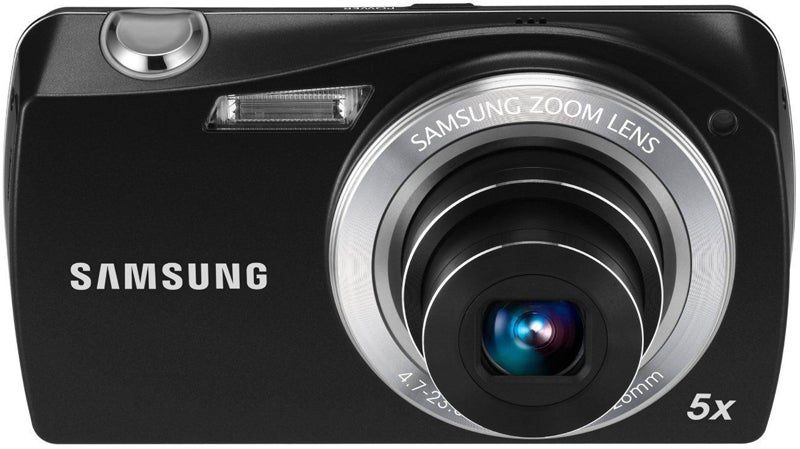Samsung ST6500 Review
Samsung ST6500 Review
With a feature list that wouldn't look out of place on a camera £100 more expensive, the Samsung ST6500 certainly has the good on paper. Can the Samsung ST6500 impress in our in-depth test?

Verdict
Pros
- Well priced for the features, some decent image quality
Cons
- Overly-aggressive post production, poor LCD touch screen
Key Specifications
- Review Price: £199
The Samsung ST6500 offers plenty in its compact frame, with a 16MP sensor behind the 5x optical zoom lens as well as a 3inch touch screen. This affords the ST6500 to have a sparse frame, with only a handful of buttons visible.
//
Samsung ST6500 Review – Features
As ever with a touch screen device the majority of the minor functions are sealed within menu options. As the likes of alterations between still and movie recording modes are missing a physical control method it’s necessary to dive into the menu system, which has it’s benefits and disadvantages. The screen isn’t hugely responsive, needing a fingertip rather than a full finger press, and the juddery manner in which the screen animates when being swiped across is indicative of the general performance of the ST6500 in terms of the touch screen. Most controls aren’t immediately responsive, which is very frustrating. This is exasperated by the appearance of sliders and dials on the screen once a feature is selected, obscuring the preview.
The 5x optical zoom starts at a wide angle of 26mm, and is stabilized using optical and ISO-based methods. Annoyingly the zoom is fixed in movie mode when recording, meaning any framing has to be performed before shooting. The 720p movie mode, while not to the full quality standard of the 1080 offerings most compacts now boast, is decent enough to fill the average HD TV without looking below par. There’s also a number of templates to shoot within, which frame the subject with a number of gimmicky themes such as Holiday and Billboard. The memory card used is something of a feature, as microSD is the chosen format as opposed to the more standard SD/SDHC option. This smaller, less common card type is mostly used in mobile phones, and needs an adapter or specialist card reader to retrieve the images when not using the camera’s USB cable.
Samsung ST6500 Review – Design
Although the relatively striking design has plenty of curved edges, the protrusion of the lens spoils the overall look somewhat. With a choice of black alone as the colour, and a duller shade at that, fingerprints are annoyingly prominent on the front and around the sides. The slither of silver that adorns the outer edge of the lens and around the top of the body breaks up the constant black, with the shutter release being coloured in the same manner with a light-up surround. The purple illumination indicates the camera is being powered up, once again adding a degree of visual flair to the otherwise dark frame.
The rear of the camera is dominated by the LCD screen, with the physical controls limited to the zoom, playback and Home buttons. Although the playback button is a traditional option, the zoom is a vertical slider with a limited amount of movement in both directions. Each control feels quite cheap and plasticy, making the ST6500 appear far less expensive than it is. Even the shutter release has a worrying amount of lateral movement for a control only designed to move vertically.
General performance is hindered by the touch screen, which delays selection of a number of features. However once the standard record mode is entered focus is reasonably quick, and the zoom lens reacts well.
Annoyingly the camera ‘locks up’ while the flash is charging, meaning none of the controls are active. When trying to take multiple shots this makes any reframing utilizing the zoom impossible, or altering other settings. The screen itself is of a disappointingly low resolution, offering only 230k dots across the 3inches of LCD. Having an amount of touchscreen gesture control, which includes the swipe motion made popular amongst iPhones and iPads, is impressive but lacking the full functionality of those devices. There’s no ‘pinch’ gesture for zooming in, which would be helpful to see fine detail on the low-res screen. Smart Auto mode doesn’t delay the ST6500 at all, and nor does the touch shutter mode, with the latter producing an image impressively quickly from a decent contact.
Samsung ST6500 Review – Image Quality
The end result, however, isn’t without its issues. A combination of seemingly overloading the sensor with pixels and a high level of noise result in a grainy end product across the ISO range, with images above the 400 mark showing this to a noticeable extent. The compression performed post-shooting helps matters at a distance, but at 100% magnification the cost of employing such techniques on fine detail can be seen first hand. Edges are smudged, colours merge and the upper end of the ISO range given a limited tonal range, although the visible noise is all but removed.
Tonal range is decent enough in the midtones, but higher frequency shades seem problematic. A particularly striking pink flower used for our test shots lost a degree of tonal range, becoming overly punchy in comparison to the rest of the image. Dynamic range is relatively impressive at times, showing the benefits to favouring the mid tones, although some of the brighter highlights seemed just out of reach. Sharpness, under the right conditions, was decent enough to produce a detailed image, although the post-processing spoiled this somewhat.
Verdict
Over reaching seems to be the Samsung ST6500’s major problem, as the huge resolution needs to be processed and touch screen is poor.
Trusted Score
Score in detail
-
Value 9
-
Design 9
-
Features 8
-
Image Quality 8
-
Performance 8

